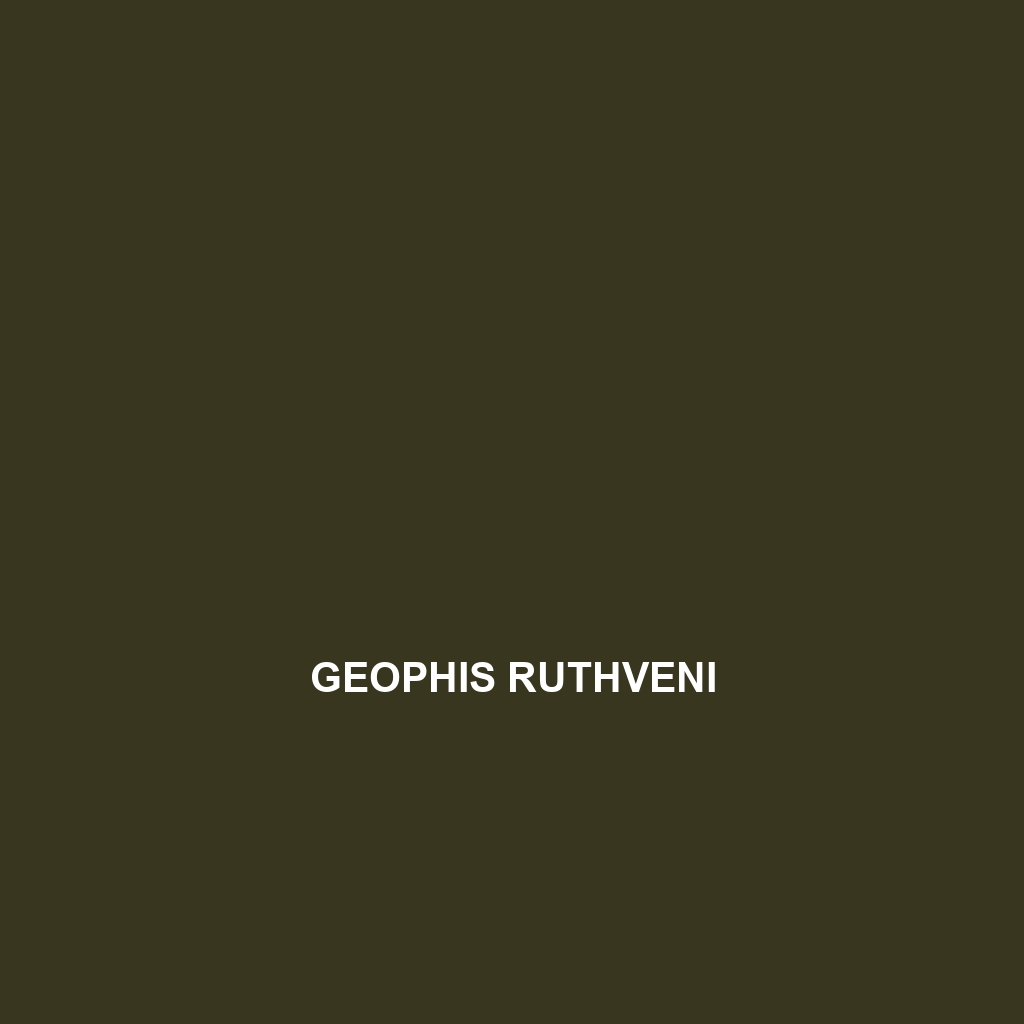Common Name
Geophis ruthveni
Scientific Name
Geophis ruthveni
Habitat
Geophis ruthveni, commonly known as Ruthven’s earth snake, is primarily found in the humid tropical environments of Central America, particularly in countries such as Honduras and Nicaragua. This species thrives in diverse habitats, including rich rainforests and moist cloud forests, characterized by high humidity and dense vegetation. The presence of leaf litter and a moist underground environment provides ideal conditions for this burrowing snake. Additionally, Geophis ruthveni can also be found in montane regions, where cooler temperatures and abundant rainfall contribute to its survival. These diverse habitats allow for an intricate ecosystem where this snake plays a critical role.
Physical Characteristics
Ruthven’s earth snake exhibits distinctive physical features that aid in its identification. Typically, adults reach lengths of approximately 30 to 50 cm (12 to 20 inches), displaying a slender and elongated body shape, which facilitates burrowing. The coloration of Geophis ruthveni is primarily a blend of brown and gray hues, with some individuals showcasing a more reddish tint. Its dorsal scales are smooth, and it possesses a robust head that is slightly wider than the neck, allowing for better movement through soil and leaf litter. Furthermore, the ventral side is generally lighter, aiding in camouflage against predators. These adaptive features make Geophis ruthveni well-suited to its subterranean lifestyle.
Behavior
The behavior of Geophis ruthveni is largely influenced by its nocturnal habits, wherein it becomes active during the night to hunt and forage. This snake is not known to be particularly social, generally leading a solitary life unless during the mating season. Mating rituals typically occur during the rainy season, when males exhibit displays of courtship towards potential female partners. Interestingly, Geophis ruthveni has been observed engaging in burrowing activities during daylight hours after heavy rain, suggesting a unique adaptation to changing weather patterns. This behavior can intrigue herpetologists and nature enthusiasts alike, highlighting the fascinating lifestyle of this snake.
Diet
Geophis ruthveni is primarily carnivorous, feeding mainly on invertebrates such as earthworms, insects, and small rodents. It uses its keen sense of smell to locate prey hidden within the soil and leaf litter. This species’s diet is crucial for maintaining the balance within its ecosystem, as it helps control pest populations. The feeding patterns typically occur at night, aligned with its nocturnal behavior, allowing it to hunt efficiently in low light. Its role as a predator highlights the ecological importance of Geophis ruthveni within its habitat.
Reproduction
The reproductive cycle of Geophis ruthveni occurs during the warm and humid months, often coinciding with the rainy season, which is crucial for the survival of the offspring. After a courtship period, females lay approximately 5 to 10 eggs in moist soil or hidden within leaf litter. The gestation period before the eggs hatch lasts around two to four months, depending on environmental conditions. Hatchlings measure about 10 to 15 cm (4 to 6 inches) and are relatively independent from birth. The maternal care of the young is minimal, as the species focuses more on survival as the primary instinct. These reproductive strategies are tailored to ensure the success of the species in its natural habitat.
Conservation Status
Currently, Geophis ruthveni is classified as of ‘Least Concern’ by the International Union for Conservation of Nature (IUCN). However, like many species within Central American ecosystems, it faces potential threats from habitat destruction due to deforestation and agricultural expansion. Conservation efforts aim to protect these habitats while raising awareness about the importance of biodiversity. Continued monitoring of Geophis ruthveni populations is essential to ensure its survival amidst changing environmental conditions.
Interesting Facts
Geophis ruthveni is often considered a vital species for soil health and plays an intricate role in the ecology of its habitat. One fascinating aspect is its ability to consume a wide range of prey items, which enables it to adapt to various environmental circumstances. Additionally, scientists have noted that the unique coloration may serve as a warning to potential predators about its unpalatability, adding to its survival strategies. This adaptability and resilience make Geophis ruthveni an intriguing subject for research within herpetology.
Role in Ecosystem
As a predator, Geophis ruthveni contributes significantly to the ecological balance within its habitat. By preying on invertebrates and small rodents, it aids in regulating population dynamics, which is crucial for maintaining the health of the ecosystem. Furthermore, through its burrowing activities, this species helps aerate the soil and promotes nutrient cycling, ultimately benefiting plant growth and the overall ecosystem functionality. The presence of Geophis ruthveni serves as an indicator of a healthy and diverse environment, underscoring its role as a key component of the biodiversity found in Central American ecosystems.
